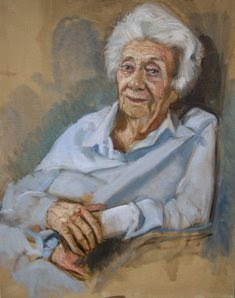I now start working with the pens establishing and building up the details of the buildings.

To increase the depth of tone, I apply the technique of cross hatching. At other times I stipple or print with either a tissue or sponge dipped in ink.
The Edding pens create a line of uniform width which can look somewhat mechanical if overused. To counterbalance this I also use a brush pen or even a very fine sable brush dipped in ink. The dark timbers on the buildings were created with these.















